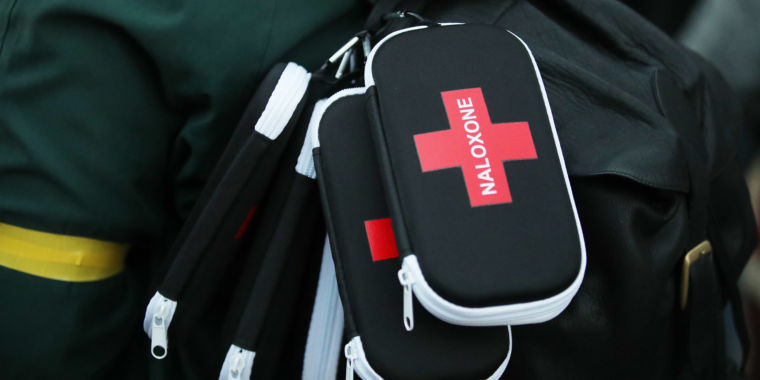

Notorious OxyContin-maker Purdue Pharma—which has been widely criticized for deceptively marketing its highly addictive painkiller and for its role in spurring the current nationwide epidemic of opioid abuse and overdose deaths—is moving ahead with a new, potent drug, one said to be an antidote to opioid overdoses.
The company
announced this week that the US Food and Drug Administration has granted fast-track status to its investigational drug nalmefene hydrochloride (HCl), an injectable, emergency treatment intended to rescue people suspected of having an opioid overdose. Purdue suggests that nalmefene HCl’s effects last longer than the similar emergency opioid antagonist naloxone. As such, the company hopes nalmefene HCl will out-compete naloxone at reversing overdoses from the most highly potent opioid, namely fentanyl, which is currently driving the alarming numbers of opioid overdose deaths. The
FDA’s fast-track status will speed the development and regulatory review of the drug.
“Opioid antagonists like naloxone have played an important role in the emergency treatment of opioid overdose,” John Renger, Purdue’s head of Research & Development and Regulatory Affairs, said in a statement. “However, because of the increasing number of deaths due to fentanyl and its even more potent analogues, we are focusing on a potentially more potent and longer-lasting rescue option specifically intended to work in those overdose situations.”
Deaths from the extremely potent fentanyl began spiking nationwide in 2013. In 2017, synthetic narcotics (mainly fentanyl) were behind roughly 40 percent of the more than 70,200 overdose deaths in the country. The abrupt rise of fentanyl use and overdoses followed a quadrupling of use and overdoses from prescription opioids, such as OxyContin. As the crisis came to light, opioid prescribing leveled off and began declining in 2012, leading to the rise of illicit fentanyl and heroin use.
Amid the crisis, Purdue has been fiercely condemned for initially downplaying the addictiveness of OxyContin, which it began aggressively marketing in the mid-1990s, earning the company billions of dollars in sales. In 2007, the company and three executives pleaded guilty in federal court to criminal charges that they deceived doctors, patients, and regulators over the addictiveness of the drug. Since then, Purdue has been pummeled by lawsuits blaming the company for helping to spur the rise in opioid abuse and overdoses. The company has vigorously defended itself against the claims but is now considering filing for bankruptcy, which would soften the blow of litigation and judgments.
“What’s right”
In the statement this week, Purdue once again side-stepped any involvement in initiating the epidemic, focusing solely on illicit drug use. Purdue’s president and CEO, Craig Landau was quoted as describing the problem simply as “Fentanyl and illicit opioid deaths continue to increase in the United States, fueled increasingly by overdoses of this class of compounds.”
In a recent interview with the Washington Post, Landau said he expected Purdue’s efforts to treat opioid overdoses would be criticized, saying:
I recognize everything we do will be criticized in this regard, but in the end we’re going to do what’s right. These are good things that could and should have a positive impact on public health and on patients.
In line with that sentiment, Purdue announced that it doesn’t intend to make money on the new drug. “As part of Purdue’s commitment to advance meaningful solutions to address the opioid crisis, the company will work to bring forward this option with the commitment not to profit from any future sales of this drug.”
Still, according to internal discussions at Purdue that were made public in a lawsuit brought by the Commonwealth of Massachusetts, Purdue and members of the wealthy Sackler family that owns the company had carefully researched the money-making potential of treatments aimed at reversing the epidemic.
An un-redacted section of the lawsuit describes a secret plan called Project Tango, which explored Purdue’s expansion into selling treatment options. The lawsuit states that Purdue and a member of the Sackler family determined that the millions of people who had become addicted to opioids were a prime business opportunity. Purdue staff wrote in internal documents quoted in the lawsuit that “It is an attractive market. Large unmet need for vulnerable, underserved and stigmatized patient population suffering from substance abuse, dependence and addiction.”









